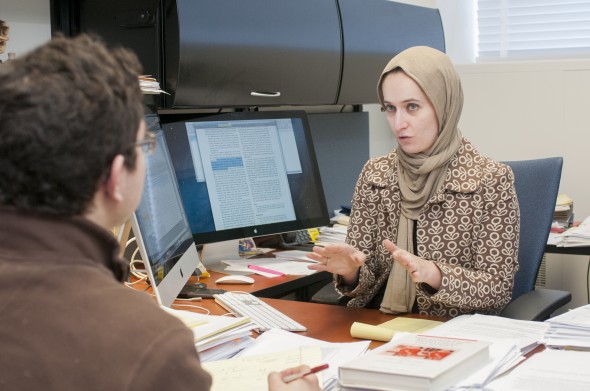Nearly 1 million Chicagoans live in pharmacy deserts

“There are persistent racial and ethnic disparities in the use of prescription
medications,” said Dima Qato, assistant professor in the College of Pharmacy.
Dima Qato knows that despite the ads, there isn’t always a pharmacy on the nearest corner.
Qato and colleagues at UIC, Brown and Northwestern universities mapped proximity and access to drug stores in neighborhoods across Chicago. They found that nearly 1 million people in the South and West sides of Chicago — areas with a high percentage of black or Latino residents — live in “pharmacy deserts,” where just getting to a drug store poses a challenge.
While prescription medications are widely used in the U.S. — nearly 70 percent of Americans have at least one prescription — they are frequently underused.
“There are persistent racial and ethnic disparities in the use of prescription medications,” said Qato, assistant professor of pharmacy systems, outcomes and policy in the College of Pharmacy.
Attempts to explain medication underutilization have focused “almost exclusively” on drug affordability, but there are barriers other than cost, she said.
The study defined having no pharmacy within a half-mile as a pharmacy desert for a low-income community with limited vehicle accessibility. For communities with adequate vehicle accessibility, the defining radius
extends to a mile.
In the study, published in the journal Health Affairs, the researchers used data from the American Community Survey, the Census Bureau and the Illinois Department of Financial and Professional Regulation to identify community characteristics and pharmacy locations in Chicago.
Between 2000 and 2010, Chicago’s white communities saw a 20 percent increase in the number of pharmacies. The number of pharmacies in Chicago’s black or Hispanic neighborhoods did not increase, Qato said. Among the nearly 1 million people who live in Chicago’s pharmacy deserts, more than half are in black communities, she said.
Disparities in medication use and health outcomes may worsen if future policies continue to focus exclusively on insurance coverage and fail to ensure the geographic accessibility of pharmacies in minority communities, Qato said.
“Our findings could inform strategic decisions about the geographic distribution of pharmacies — for example, the incorporation of pharmacies into newly developed community health centers that are expected to expand in designated Medically Underserved Areas as a result of the Affordable Care Act,” she said.
Co-authors on the paper were Martha L. Daviglus, Jocelyn Wilder and Todd Lee, UIC; Danya Qato, Brown University; and Bruce Lambert, Northwestern University.
